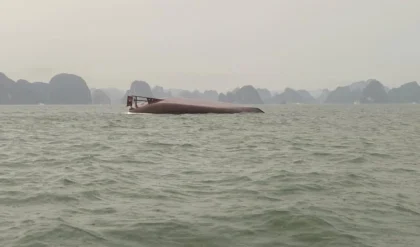In a significant development amidst the ongoing Russia-Ukraine war, President Vladimir Putin has made a rare visit to Chechnya, marking his first trip to the region since 2011. This visit comes at a time when Russia is grappling with multiple challenges, both domestically and internationally, due to its involvement in the conflict with Ukraine. Putin’s trip to Chechnya is not only a demonstration of his continued support for the region but also a strategic move to reinforce his image as a strong leader in the face of adversity.
Chechnya, a republic in the North Caucasus region of Russia, has a tumultuous history characterized by violent conflicts and a struggle for independence. The two Chechen wars, fought between the Russian government and Chechen separatists in the 1990s and early 2000s, left deep scars on the region and its inhabitants. Since then, Chechnya has been largely under the control of Ramzan Kadyrov, a strongman leader who has been a loyal ally of Putin. Kadyrov’s administration has been marked by allegations of human rights abuses, suppression of dissent, and the promotion of a cult of personality around both himself and Putin.
Putin’s visit to Chechnya is laden with symbolism, as it reaffirms his alliance with Kadyrov and highlights the Kremlin’s ongoing efforts to project stability in a region that has historically been volatile. During his visit, Putin engaged in discussions with Kadyrov and other local officials, focusing on security and economic development in Chechnya. The meeting underscores the importance of Chechnya to the Russian Federation, both as a strategic location in the North Caucasus and as a showcase for Putin’s leadership style.
The timing of this visit is particularly noteworthy given the backdrop of the ongoing war in Ukraine. As Russia faces increasing isolation on the world stage and significant military setbacks, the Kremlin is eager to maintain a strong narrative of unity and strength within its borders. By visiting Chechnya, Putin aims to bolster the image of a cohesive Russia, where regions are working in tandem with the central government to address security concerns and economic challenges.
One of the key aspects of Putin’s visit was the emphasis on military preparedness and security. Chechnya has been a focal point for Russian military operations in the past, and Kadyrov has positioned his forces as a loyal and formidable component of the Russian military apparatus. During his discussions with Kadyrov, Putin praised the Chechen leader’s efforts in maintaining order and combating terrorism in the region. This acknowledgment serves not only to reinforce Kadyrov’s authority but also to highlight the Kremlin’s reliance on regional leaders to manage security issues in the face of external threats.
Furthermore, Putin’s trip to Chechnya can be interpreted as a message to both domestic and international audiences. For domestic audiences, it reinforces the idea that the Russian government is in control and capable of managing its territories effectively. It sends a signal to Russians that despite the challenges posed by the war in Ukraine, the government remains vigilant in ensuring stability and security across the country.
Internationally, the visit serves as a reminder of Putin’s commitment to maintaining influence over the North Caucasus region. As the conflict in Ukraine continues to draw attention and resources, the Kremlin is keen to demonstrate that it can still maintain a grip on its territories and manage internal challenges. This is particularly important as Western nations impose sanctions and increase pressure on Russia, seeking to undermine Putin’s regime and influence.
Kadyrov’s role in this dynamic cannot be understated. As a loyal ally of Putin, Kadyrov has been instrumental in implementing the Kremlin’s policies in Chechnya. His administration has been characterized by a mixture of economic development, social programs, and strict security measures that have helped to stabilize the region. However, this stability has come at a cost, with numerous reports of human rights abuses and suppression of dissent. Kadyrov’s reputation as a strongman leader has drawn criticism from human rights organizations, yet he continues to enjoy the support of the Kremlin.
The implications of Putin’s visit to Chechnya extend beyond the immediate political landscape. It raises questions about the future of the region and the role of local leaders in shaping Russian policy. As the war in Ukraine continues, the Kremlin may increasingly rely on regional leaders like Kadyrov to maintain control and address security issues. This could lead to a further consolidation of power among regional leaders, potentially resulting in a more fragmented political landscape within Russia.
Moreover, the visit highlights the complexities of the relationship between the Kremlin and the regions it governs. While Putin seeks to project strength and unity, regional leaders often operate with significant autonomy, pursuing their own agendas and interests. This dynamic can lead to tensions and conflicts, particularly if local leaders feel that their interests are being sidelined in favor of broader national priorities.
As the situation in Ukraine remains fluid, the implications of Putin’s visit to Chechnya will continue to unfold. The war has already had far-reaching consequences for Russia’s political, economic, and social landscape, and the Kremlin’s ability to navigate these challenges will be
Watch video:





